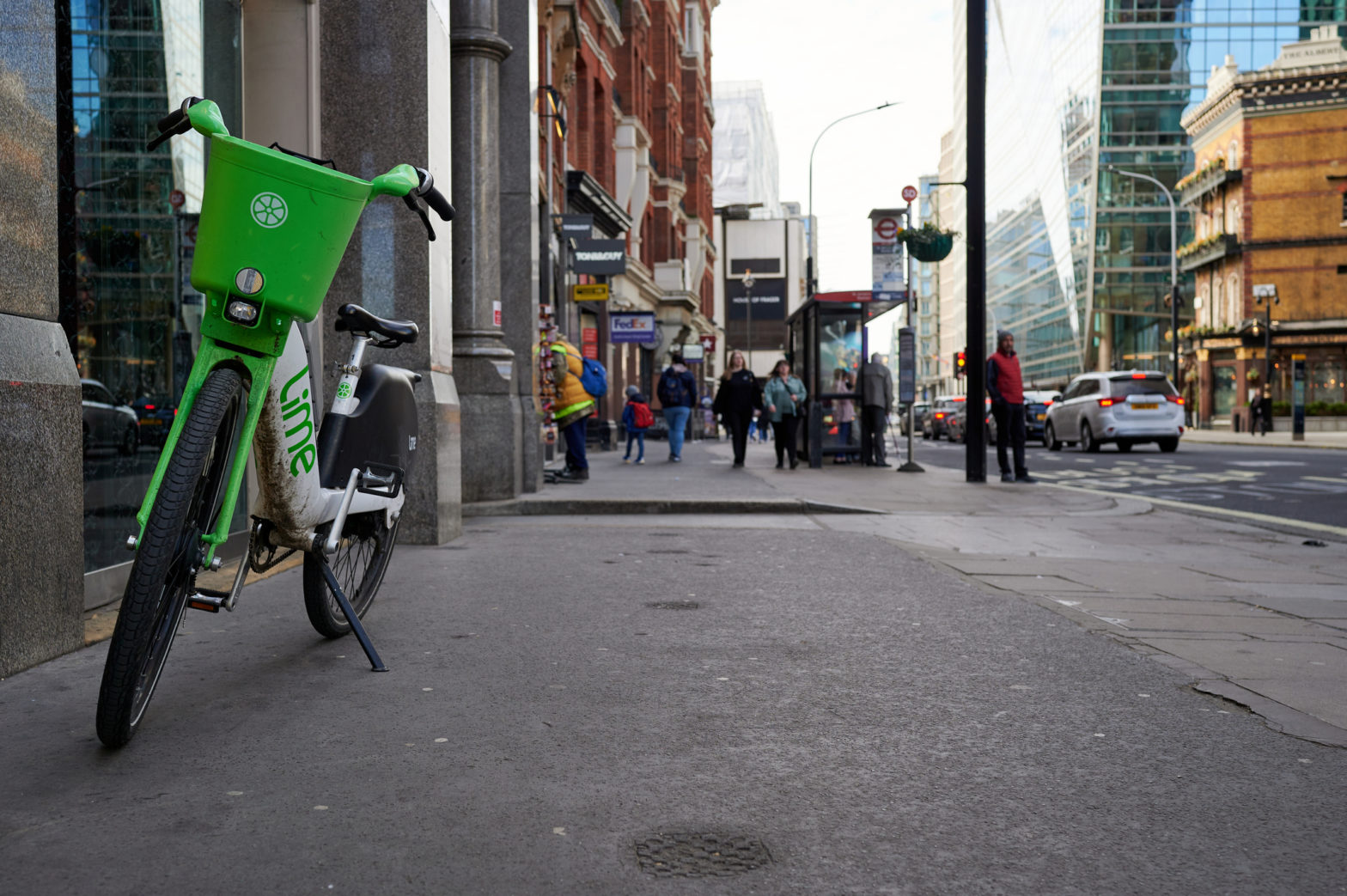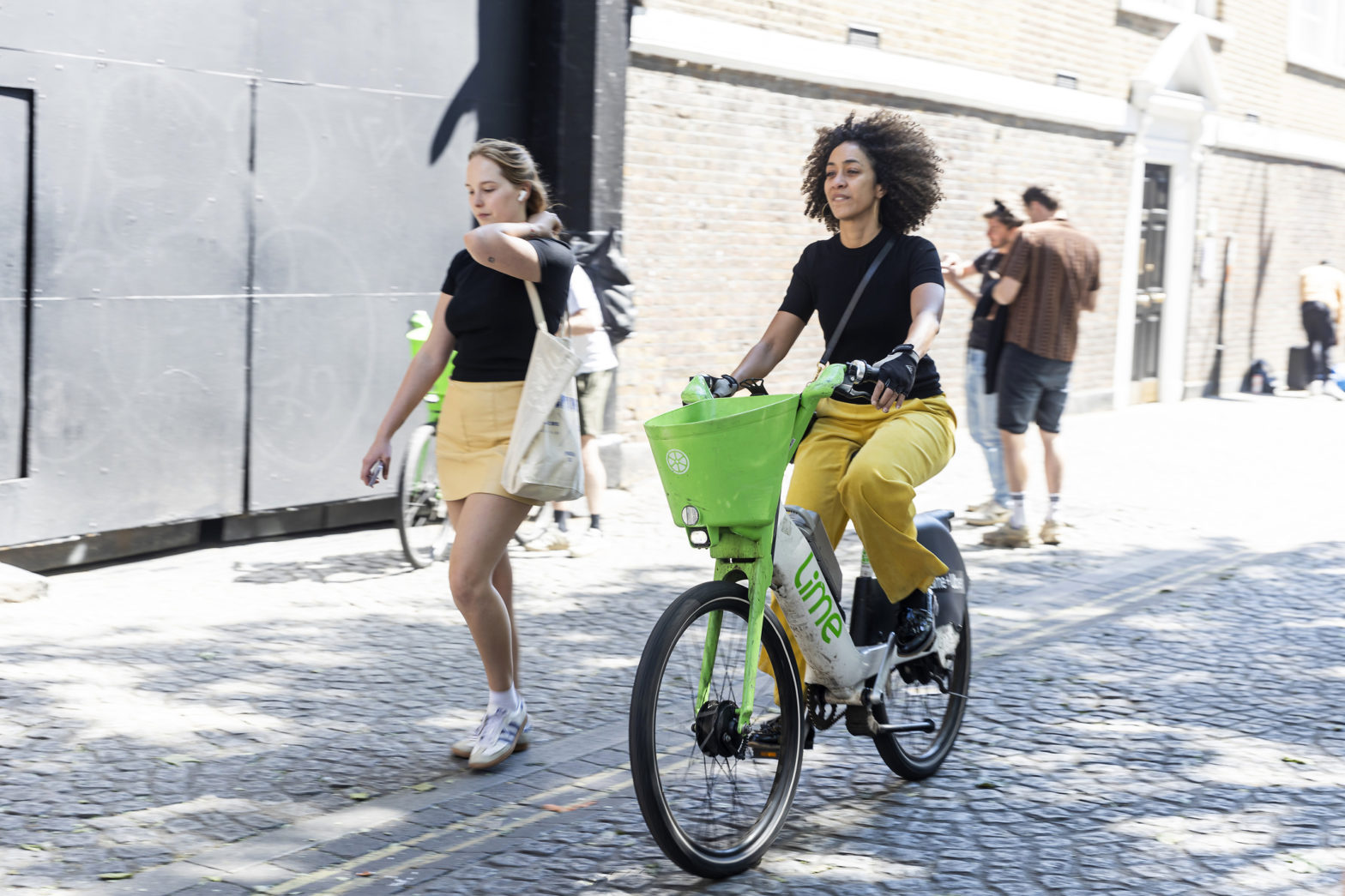
Record cycling in London backed by partnerships
23 May 2025
by Rikesh Shah
By Rikesh Shah, Global Director of Urban Mobility at Cities Today*, and former Head of Open Innovation at Transport for London.
When it comes to mode shift away from cars, increasing cycling journeys and meeting London’s ambitious active travel targets it is clear to see that a rising tide really does lift all boats.
Transport for London (TfL), shared e-bike operators and cyclists on their own privately-owned bikes are all contributing to a quiet urban mobility revolution. Londoners are now taking 1.33 million cycling tips every day, up by more than a quarter since pre-Covid levels. This is around a third of all Tube trips every day in London!
Nowhere is this cycling boom more obvious than in the Square Mile where cycling has increased by 50 percent in the past two years alone and 70 percent since 2017. Cycling now accounts for 56 percent of commuter traffic, displacing cars as the top transport mode. Underpinning this success is the fact that cycling has become mainstream because it is more accessible, more convenient and safer. If you stand at Bank Junction, you’re now much more likely to see someone cycling an e-bike in work attire on their way to a meeting than the cliched lycra-clad cyclist on a road bike.
It is worth noting this record usage has resulted in overcrowding and obstructions at key locations near stations and other hotspots. Operators have a responsibility to ensure that this e-bike boom does not negatively impact pedestrians, and crucially does not negatively impact on support from political leaders and Londoners for the further growth of cycling and investment in active travel, green transport and cycling infrastructure.
Public private partnership
As is so often the case, the key here is the public sector and private providers working together in partnership. Shared e-bike trips from users of Lime and Forest in the City of London have quadrupled since 2020–accounting for 1 in 6 total trips into the City–with Lime publishing data showing that their users made 16 million journeys during commuting hours alone in 2024.

This collaboration is best seen through TfL’s laudable commitment to invest £1m in delivering thousands of parking bays for e-bikes, particularly on Red Routes (where stopping, parking, and loading are restricted) and at busy stations. One in three shared e-bike trips in London connect to public transport, helping more people to access TfL services and joining up our transport network in areas with lower public transport density and less easy access to the Tube, Overground and rail services.
That is why it is incumbent on all of us to make this work. Just as TfL and London boroughs are investing in parking for shared e-bikes, this year Lime has invested an additional £20million in operational improvements, including £5 million in parking infrastructure. When we dig into the data and when I speak to people working to solve the biggest challenges active travel in particular, the most valuable aspect of the huge increase in e-bike trips from a climate and mode shift perspective is that 20 percent of shared e-bike users hadn’t cycled before in London. To truly deliver mode shift on an ingrained and sustained basis we need to provide people with the opportunity to shift onto the mode in the first place.
It doesn’t make sense for the next few years to be characterised by a battle between public and private sector shared bike providers for more ‘riders’. It is something to be celebrated that we now have shared micromobility operators providing green, clean active travel options in underserved parts of the city, investing in parts of the city that are far beyond the reach of the publicly funded cycles scheme.
Going forward, we have an opportunity to consider, if or at what levels we should be subsidising bike share scheme. It is clear, with some minor tweaks, we should recognise that the market is working effectively because there are different products serving people’s differing needs and choices. Other global mega-cities similarly have public and private schemes working side by side, offering flexibility that serve the needs of that city and even individual boroughs.
Delivering on ambitious transport targets
There is no question that much of the success of London’s cycling revolution is down to the political leadership of the mayor and the investment made by TfL to create a cycling-friendly environment in the capital. TfL increased the total length of London’s cycle network to over 400km last year, launching 20 new Cycleways routes and by 2030 40 percent of Londoners will live within 400 metres of a Cycleway. The further expansion of e-bike providers’ operating areas in outer London and more underserved areas is working hand in glove with these efforts to ensure all Londoners are able to cycle safely, and the benefit of shared schemes is that services can be up and running quickly without the hugely expensive and time-consuming processes required in delivering a docked service.
Looking to the future, meeting the mayor’s target of 80 percent of all trips in London to be made on foot, by bike or on public transport will require close partnerships and collaboration between City Hall, local authorities and private operators. Governments and cities stand to benefit hugely from private operators investing in high quality and safe innovative solutions that get more people cycling and help deliver on our climate goals with no or low cost to the taxpayer.
With cities looking to find more savings from budgets, and in the UK, it is difficult to foresee further investment coming from central government given the Treasury’s fiscal rules and other competing demands on the public purse. This is a familiar picture across the world, with Berlin’s transport authority facing huge cuts and New York’s Metropolitan Transportation Authority searching for US$3 billion of savings.
The lesson of London’s cycling boom is that collaboration between the private sector and the public sector is integral to delivering on shared goals whilst addressing potential risks and pitfalls. Everybody working in transport knows that we can’t leave this to the market to act untrammelled, but going too far and over-regulating the market out of business poses an additional risk of its own when private e-bike providers are serving millions of Londoners and helping to deliver on our goals of a greener, cleaner and more active transport system.
*For more information about the Shared Micromobility Alliance, and how to join, see: https://institute.cities-today.com/shared-micromobility-alliance
Image: Thebrodsk | Dreamstime.com







